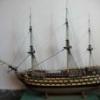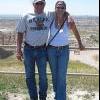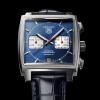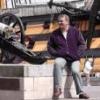Supplies of the Ship Modeler's Handbook are running out. Get your copy NOW before they are gone! Click on photo to order.
×
-
Posts
4,874 -
Joined
-
Last visited
Reputation Activity
-
 gjdale got a reaction from Elijah in BLUENOSE By Jerry - Model Shipways - Scale 1:64
gjdale got a reaction from Elijah in BLUENOSE By Jerry - Model Shipways - Scale 1:64
Paint job looks great Jerry.
-
 gjdale reacted to mobbsie in 1949 Chris-Craft 19' Racing Runabout by gjdale - FINISHED -Dumas - 1:8 Scale - RADIO
gjdale reacted to mobbsie in 1949 Chris-Craft 19' Racing Runabout by gjdale - FINISHED -Dumas - 1:8 Scale - RADIO
Hi Grant,
Having seen the damage to the hull after your first repair mate you can heartily slap yourself on the back, a first class repair job my friend, well worth going the extra mile.
That decking is really going to look stunning when sanded an polished up.
Altogether mate a bloody good job all round, well done.
Stay safe at work mate.
Be Good
mobbsie
-
 gjdale reacted to Jerry in BLUENOSE By Jerry - Model Shipways - Scale 1:64
gjdale reacted to Jerry in BLUENOSE By Jerry - Model Shipways - Scale 1:64
Good morning everyone...
Today will be a day of touching up. I am pleased with the results of the red and black hull painting, although I didn't do it with the tools I originally thought I would. The Preval Spray System didn't work as I hoped it would. The paint was apparently too thick and needed thinning but that would have affected the tone of the color. When purchasing the product I was told no thinning was necessary, so I returned everything with no trouble and bought a can of Rust-Oleum satin Black and satin Colonial Red which worked. But as usual there are places that were under sprayed or completely missed due to inaccessibility. I plan to spray the color I want to use on a piece of paper to create a puddle from which I will brush on the touch-ups.
Incidentally, the masking of the hull was a real time eater. The whole idea was to mask the hull in a way that when the black painting was finished the white stripe at the waterline would be created. This required laying the first tape right on the edge of the red color and then laying a second tape 1/16th" beyond the edge of the first tape. The second tape was scotch tape so I could see the 1/16th" overlay.
So here are some pictures as to where I stand and after the touch-ups, I'll show the final results.
Have a great day.
Best,
Jerry
-
 gjdale got a reaction from hamilton in 1949 Chris-Craft 19' Racing Runabout by gjdale - FINISHED -Dumas - 1:8 Scale - RADIO
gjdale got a reaction from hamilton in 1949 Chris-Craft 19' Racing Runabout by gjdale - FINISHED -Dumas - 1:8 Scale - RADIO
Thanks very much Bug, Popeye, Lawrence, Rusty and all the "Likes".
A minor update this week....
Deck Planking
Planking the deck has presented no particular problem thus far. The instructions direct you to alternate a caulking strip with a plank, but I found it easier to laminate one of each together and then shape and fit as a single unit. The only tricky part of shaping was the last plank on either side around the side of the cockpit, which just took a little time and patience to ensure a good fit. The ends of the planks were trimmed close to the forward end of the cockpit and then taken closer still with a sanding drum in the rotary tool, before finishing by hand. Once all the planking is complete, the surface will be sanded level such that all caulking strips will be level with the planks (at the moment they stand just a little proud). Not bad for a day’s work! There will be a brief hiatus for a couple of weeks as I’ll be travelling with work.
-
 gjdale got a reaction from hamilton in 1949 Chris-Craft 19' Racing Runabout by gjdale - FINISHED -Dumas - 1:8 Scale - RADIO
gjdale got a reaction from hamilton in 1949 Chris-Craft 19' Racing Runabout by gjdale - FINISHED -Dumas - 1:8 Scale - RADIO
Planking
Planking the hull turned out to be a little trickier than anticipated, and included a “near disaster”. Planking the first side, I followed as closely as I could the lining out marks, having first tapered the planks to fit against these. The problem was in the lateral bending of the planks. Ideally, they should have been spiled. However, the planks provided are not sufficiently wide enough to spile (and I didn’t have any sheet stock that I could substitute). The kit planks are also wide enough that edge bending is very difficult, if not impossible. The result was a less than even surface. On the second side, I decided to adjust the lining out marks to allow the first (chine) plank to fall naturally – which took it exactly one strake higher on the lining out marks at the bow. This meant that I had to insert a wedge shaped piece below this plank, but the remaining planks on that side went on somewhat more easily than the first side. The result also meant that I managed to maintain alignment of planks on either side at the bow.
The near disaster came when I went to give the hull an initial sanding to even out the surface. Following the lead of others who have gone before me, I broke out the powered mouse sander and set to. I must have been a little too aggressive in one place because I suddenly noticed that I had sanded through the entire thickness of the planking and could see the white plastic showing through. Oops….. I also discovered that on the other side, one plank had developed a hole – not sure how, but the timber is very dry and brittle. Hmmmm, two repairs to make!
My first thought on repairing these was to use epoxy putty, but one of them was quite a large area and was going to look dreadful. After sleeping on it for a couple of nights, I decided that I would remove a section of the planking and patch it with new planks. Another few days to consider exactly how to achieve this, and I finally gave it a crack yesterday. I used a mini circular saw blade held in the Proxxon rotary tool and gently made some “stop” cuts at the extremities of the section I wanted to remove. I was then able to insert the blade of a No.11 Exacto knife and prise the damaged planking free. A quick clean up with the drum sander in the Proxxon to remove the residual glue and it was ready for the new timber. I took my time in shaping in the “patch” parts, and even managed to spile some thinner sections to get a very close fit. I also used some epoxy putty (Milliput) to blend the area at the bow where the timber transitions to the plastic sheeting of the hull bottom. After a careful HAND sanding, I was quite pleased with the results. Here are a couple of views of the completed repair job (forgot to take pictures of the “before”).
And here is a close up of the bow, showing the alignment of the planking. The stem is not perfect, but as it will be covererd later by the cutwater, I’m happy with it as is.
Then, at last, it was time to start on the deck planking. The process starts with the attachment of the edge or margin boards. These are die cut parts, slightly oversized, and are relatively easy to fit. Once in place, the outer edges are sanded back flush with the sides, and a strip of white “caulking” (.04” x .08” styrene) is applied to the inboard edge. The next step is to place the centre plank on the forward deck. This requires that a length of caulking be sandwiched between two planks (3/8” wide mahogany), then shaped to fit the bow and fixed in place down the centreline. Compared to the hull side planking, this was dead easy!
The remainder of the deck planking will follow a similar pattern, with a plank being glued to a strip of “caulking” before being shaped and affixed as a pair. I’ll be back when the deck planking is complete.
-
 gjdale got a reaction from WackoWolf in Civil War Picket Boat by rafine - FINISHED - Model Shipways
gjdale got a reaction from WackoWolf in Civil War Picket Boat by rafine - FINISHED - Model Shipways
Great work on the boiler Bob, it looks fantastic.
-
 gjdale got a reaction from WackoWolf in HMS Kingfisher by rafine - FINISHED - Lauck Street Shipyard - 1/48
gjdale got a reaction from WackoWolf in HMS Kingfisher by rafine - FINISHED - Lauck Street Shipyard - 1/48
Just wonderful Bob. Thanks for re-posting this log. It has given me (and I'm sure many others) a great deal of pleasure to read through.
-
 gjdale reacted to rafine in Granado by rafine - FINISHED - Caldercraft - 1:64
gjdale reacted to rafine in Granado by rafine - FINISHED - Caldercraft - 1:64
This has been a busy week. I've done the detailing of the midship area of the outer hull. This involved doing the scuppers, the sweep ports, the entry steps, the fenders, the swivel gun mounts, the channels and the sheer molding.
The scuppers are merely holes drilled from the outside that do not go all of the way through. The interior of the holes was painted graphite with a toothpick.
The sweep ports were scribed in, the scribed lines colored with a pencil and then sealed with Wipe-on Poly. The hinges from the kit PE set were painted black and glued in place with CA.
The entry steps were made from boxwood strip ( a piece of 1/32" square and a piece of 1/32" x !/16" ).
The fenders are boxwood strip shaped to the hull.
The swivel mounts are boxwood strip made as described for those at the quarterdeck.
The sheer molding was made as previously described and continued to the fenders.
The channels are the kit parts, painted black and pinned and glued to the hull.
Bob
-
 gjdale reacted to popeye the sailor in 1949 Chris-Craft 19' Racing Runabout by gjdale - FINISHED -Dumas - 1:8 Scale - RADIO
gjdale reacted to popeye the sailor in 1949 Chris-Craft 19' Racing Runabout by gjdale - FINISHED -Dumas - 1:8 Scale - RADIO
planking is coming along really great! have a smooth trip
-
 gjdale got a reaction from Shazmira in 1949 Chris-Craft 19' Racing Runabout by gjdale - FINISHED -Dumas - 1:8 Scale - RADIO
gjdale got a reaction from Shazmira in 1949 Chris-Craft 19' Racing Runabout by gjdale - FINISHED -Dumas - 1:8 Scale - RADIO
Thanks very much Bug, Popeye, Lawrence, Rusty and all the "Likes".
A minor update this week....
Deck Planking
Planking the deck has presented no particular problem thus far. The instructions direct you to alternate a caulking strip with a plank, but I found it easier to laminate one of each together and then shape and fit as a single unit. The only tricky part of shaping was the last plank on either side around the side of the cockpit, which just took a little time and patience to ensure a good fit. The ends of the planks were trimmed close to the forward end of the cockpit and then taken closer still with a sanding drum in the rotary tool, before finishing by hand. Once all the planking is complete, the surface will be sanded level such that all caulking strips will be level with the planks (at the moment they stand just a little proud). Not bad for a day’s work! There will be a brief hiatus for a couple of weeks as I’ll be travelling with work.
-
 gjdale got a reaction from Captain Slog in 1949 Chris-Craft 19' Racing Runabout by gjdale - FINISHED -Dumas - 1:8 Scale - RADIO
gjdale got a reaction from Captain Slog in 1949 Chris-Craft 19' Racing Runabout by gjdale - FINISHED -Dumas - 1:8 Scale - RADIO
Thanks very much Bug, Popeye, Lawrence, Rusty and all the "Likes".
A minor update this week....
Deck Planking
Planking the deck has presented no particular problem thus far. The instructions direct you to alternate a caulking strip with a plank, but I found it easier to laminate one of each together and then shape and fit as a single unit. The only tricky part of shaping was the last plank on either side around the side of the cockpit, which just took a little time and patience to ensure a good fit. The ends of the planks were trimmed close to the forward end of the cockpit and then taken closer still with a sanding drum in the rotary tool, before finishing by hand. Once all the planking is complete, the surface will be sanded level such that all caulking strips will be level with the planks (at the moment they stand just a little proud). Not bad for a day’s work! There will be a brief hiatus for a couple of weeks as I’ll be travelling with work.
-
 gjdale got a reaction from CaptainSteve in Queen Anne Style Royal Barge by Chuck - FINISHED - Syren Ship Model Company - 1:24
gjdale got a reaction from CaptainSteve in Queen Anne Style Royal Barge by Chuck - FINISHED - Syren Ship Model Company - 1:24
Count me in for two Chuck! (One for me and one for my Dad).
-
 gjdale got a reaction from wefalck in 1949 Chris-Craft 19' Racing Runabout by gjdale - FINISHED -Dumas - 1:8 Scale - RADIO
gjdale got a reaction from wefalck in 1949 Chris-Craft 19' Racing Runabout by gjdale - FINISHED -Dumas - 1:8 Scale - RADIO
Thanks very much Bug, Popeye, Lawrence, Rusty and all the "Likes".
A minor update this week....
Deck Planking
Planking the deck has presented no particular problem thus far. The instructions direct you to alternate a caulking strip with a plank, but I found it easier to laminate one of each together and then shape and fit as a single unit. The only tricky part of shaping was the last plank on either side around the side of the cockpit, which just took a little time and patience to ensure a good fit. The ends of the planks were trimmed close to the forward end of the cockpit and then taken closer still with a sanding drum in the rotary tool, before finishing by hand. Once all the planking is complete, the surface will be sanded level such that all caulking strips will be level with the planks (at the moment they stand just a little proud). Not bad for a day’s work! There will be a brief hiatus for a couple of weeks as I’ll be travelling with work.
-
 gjdale got a reaction from mtaylor in 1949 Chris-Craft 19' Racing Runabout by gjdale - FINISHED -Dumas - 1:8 Scale - RADIO
gjdale got a reaction from mtaylor in 1949 Chris-Craft 19' Racing Runabout by gjdale - FINISHED -Dumas - 1:8 Scale - RADIO
Thanks Tom,
I've been avidly reading through a bunch of logs and "how-to"s over on the RC Groups site. Plenty of good advice there, as well as some great examples. Even though I've never done it before, I'm pretty confident that I'll be able to make a reasonable job of it. Worst case - sand it all back to bare wood again and go the epoxy resin route instead.
-
 gjdale reacted to RGL in HMS Dreadnought 1907 by RGL - FINISHED - Zvezda - 1/350- PLASTIC
gjdale reacted to RGL in HMS Dreadnought 1907 by RGL - FINISHED - Zvezda - 1/350- PLASTIC
Now, the big guns and 12 pounders are finished. I won't bore you with the sequences, but like all piece work, it's just added bit by bit. I have also added strips under the anchor chain. Plus a few other old photos which are pretty cool.
-
 gjdale reacted to EdT in Young America 1853 by EdT - FINISHED - extreme clipper
gjdale reacted to EdT in Young America 1853 by EdT - FINISHED - extreme clipper
Further to my lamentations on shackle problems: Sorry to dwell on this but is has become an issue in the rigging sequence and therefore a puzzle as to how much of this to include in the "pre-rigging" content of Vol II vs. Vol III. Some may find this interesting. My plan has been to get all these connections installed in the hull and deck in Vol II then start Vol III with mastmaking. So....
Here is a picture of two eyebolts with shackles. These were made by fitting the horseshoe of the shackle through the eyebolt then silver-soldering wire across the ends of the horseshoe to simulate a screwed bolt. This may also be done by making the shackle then spinning the eyebolt over it. In either case the work must be done before installing the eyebolt in the deck or whatever. Ideally all the deck eyebolts and the drilling involved should be done before other rigging gets in the way and perhaps blocks should be strapped to the shackle before installing. Rigging specifications, drafting and planning needed.
This is how I'm spending my summer.
Ed
-
 gjdale got a reaction from thomaslambo in 1949 Chris-Craft 19' Racing Runabout by gjdale - FINISHED -Dumas - 1:8 Scale - RADIO
gjdale got a reaction from thomaslambo in 1949 Chris-Craft 19' Racing Runabout by gjdale - FINISHED -Dumas - 1:8 Scale - RADIO
Thanks very much Bug, Popeye, Lawrence, Rusty and all the "Likes".
A minor update this week....
Deck Planking
Planking the deck has presented no particular problem thus far. The instructions direct you to alternate a caulking strip with a plank, but I found it easier to laminate one of each together and then shape and fit as a single unit. The only tricky part of shaping was the last plank on either side around the side of the cockpit, which just took a little time and patience to ensure a good fit. The ends of the planks were trimmed close to the forward end of the cockpit and then taken closer still with a sanding drum in the rotary tool, before finishing by hand. Once all the planking is complete, the surface will be sanded level such that all caulking strips will be level with the planks (at the moment they stand just a little proud). Not bad for a day’s work! There will be a brief hiatus for a couple of weeks as I’ll be travelling with work.
-
 gjdale got a reaction from hamilton in 1949 Chris-Craft 19' Racing Runabout by gjdale - FINISHED -Dumas - 1:8 Scale - RADIO
gjdale got a reaction from hamilton in 1949 Chris-Craft 19' Racing Runabout by gjdale - FINISHED -Dumas - 1:8 Scale - RADIO
Thanks very much Mobbsie, Popeye and Bug, and to all who hit the 'Like' button. Some more progress this week, and a major milestone achieved (I think).
As mentioned previously, I have decided to attempt a two-piece hinged engine hatch. I started by re-designing the hatch framing using TurboCAD and then cut and assembled the new pieces. It needed to be slightly smaller in each dimension to allow for the hinges and for some trim at a later stage. In the photo below, the original kit-supplied hatch is on the left, and the new hatch on the right. It has been built as one piece initially and will be separated into two pieces after the planking has been done.
I then moved back to completing the dashboard by installing the gauges and switches. The gauge bezels are the ones that I turned Aluminium at the start of the build. The gauge faces are decals provided by a fellow modeller, glued onto a clear plastic backing. Gauge glasses are made from “googly eyes”. The knobs and switches are from MACK products. It’s not perfect, but I think it looks a heck of a lot better than the simple decal dash provided in the kit.
The next job was to test the lighting for the dash. The two 3-volt lights in the light box were temporarily connected up to the power and tested – successfully!
Lights off:
Lights on:
And with the dashboard in place:
I also fitted the cockpit woodwork and floors. The floors are plastic (Sintra) and the kit instructions say to paint them grey to represent the non-skid flooring. I decided to use some wet and dry sandpaper to give a textured surface. It has been coated with a waterproof matt varnish. Here’s a couple of pics of the two cockpits.
I think that I am at last ready to install the sub-decking and close this baby up in preparation for planking!
-
 gjdale got a reaction from billocrates in HMS Naiad 1797 by GDM67 - 1:60 - using Ed Tosti Books
gjdale got a reaction from billocrates in HMS Naiad 1797 by GDM67 - 1:60 - using Ed Tosti Books
Congratulations on reaching such a significant milestone Gary. She looks superb!
-
 gjdale got a reaction from mtaylor in HMS Naiad 1797 by GDM67 - 1:60 - using Ed Tosti Books
gjdale got a reaction from mtaylor in HMS Naiad 1797 by GDM67 - 1:60 - using Ed Tosti Books
Congratulations on reaching such a significant milestone Gary. She looks superb!
-
 gjdale reacted to GDM67 in HMS Naiad 1797 by GDM67 - 1:60 - using Ed Tosti Books
gjdale reacted to GDM67 in HMS Naiad 1797 by GDM67 - 1:60 - using Ed Tosti Books
370 Hour Mark! I have reached a milestone - the hull is now fully framed, ok, I still need to do the four filler frames along the stern deadwood on each side, but hey, I'm almost there...
I have faired the hull using a combination of curved rasps to know down the high spots and smooth rasps for the detail. I then resorted to an oscillating palm sander with 80 grit paper to take out the heavy scratches. I have a few frames that I sanded through to the chock... I am debating about replacing these frames, but think the repair might be worse than what is there now. I think a few of these chocks can be hidden with planking, etc. There are some small seem gaps here and there that I will fill with glue and sawdust. Otherwise, things are exceeding my expectations.
Overall, I am exceedingly happy with how things turned out. Next to do in this order are:
Filler frames Refinement of the hull along the rabbet Treenail the chocks Copper bolt the frame feet Add the keelson Finish sand the hull 120, 340, 600 #0000 Steel Wool "point" each of the frames. Making each frame butt sharp and even. Install a temporary sheer strake Finish the top timbers (remove spacers) Install the ribbands Apply finish to the lower hull The above list will easily take me right up to the conference in October. I estimate about 75 hours work.
Things I would do differently next time is to be more careful with my spacers. While temporary, I think they should be installed very neatly and relatively in the same location on each frame. You will live with these for a long time and they distract from the model when sloppy.
Also, I would wait to install the main frame spacers, which are permanent. I made mine from Holly. While the drawings give a great reference point for these spacers, the subtle change in angle or position of the frame can change the location on the completed model. I will redo some of these so that they run in a fair line when looking down the hull.
Thanks for reading!
Gary
-
 gjdale reacted to druxey in Young America 1853 by EdT - FINISHED - extreme clipper
gjdale reacted to druxey in Young America 1853 by EdT - FINISHED - extreme clipper
Tricky stuff, Ed. I congratulate you for not incinerating the rudder or the whole model! The end result looks great.
-
 gjdale reacted to EdT in Young America 1853 by EdT - FINISHED - extreme clipper
gjdale reacted to EdT in Young America 1853 by EdT - FINISHED - extreme clipper
Young America - extreme clipper 1853
Part 169 – Rudder Pendants
Another small item of work completed today – the rudder chain pendants. But first, I made a small modification to the binnacle to give it a larger base and to improve its overall proportions. The additional base was added as a brass bottom disk as shown in the first picture.
The rudder pendants, sometimes called preventers, were provided to prevent loss of an unshipped rudder or as a means to operate the rudder from the deck in the rare event of a steering gear failure. They consisted of chains on either side of the stern, bolted to the hull.
I used 30 link per inch copper chain for the rudder pendants. At 1:72 this equates to 30 links per fathom. After cutting the chains to length, eyebolts were fitted to the chain. I am making all eyebolts for the model by spinning copper wire. The wire is looped over a bent pin hook in a hand drill and the two ends held in a vise. The drill then spins up the shaft of the eyebolt. In this case the end link of the chain was first slipped over the wire. In the next picture the wire (and chain) has been spun and the shaft is being clipped off.
The wire in this case was 26 gauge. Most eyebolts on the ship will be made from 22, 24, or 26 gauge wire. The eyebolt and chain are shown in the next picture.
Each pendant is anchored to the hull just below the sheer rail at two points, so a second eyebolt was fitted part way along the chain by the same process. Some 26 gauge wire was then threaded at the other end to make a shackle to the rudder horns. This is shown in the next picture.
The pendants were then hung from the stern as shown below.
The next picture shows some copper-phosphorus solder applied to the shackles. Silver soldering these this way is a bit risky, but this is what happens when you do not plan ahead. It would have been much better to have done these shackle connections before the horns were mounted, but this will do.
The torch flame was kept well away from the wood and at just enough gas to flux the solder on the thin wire shackles. The next picture shows the finished pendants after blackening with liver of sulfur solution.
In the picture the rudder is turned hard to port to check that sufficient chain has been provided and rudder movement is not hindered. Ideally the chain stays above the load waterline at all rudder positions.
Ed
-
 gjdale got a reaction from mtaylor in 1949 Chris-Craft 19' Racing Runabout by gjdale - FINISHED -Dumas - 1:8 Scale - RADIO
gjdale got a reaction from mtaylor in 1949 Chris-Craft 19' Racing Runabout by gjdale - FINISHED -Dumas - 1:8 Scale - RADIO
Thanks very much Bug, Popeye, Lawrence, Rusty and all the "Likes".
A minor update this week....
Deck Planking
Planking the deck has presented no particular problem thus far. The instructions direct you to alternate a caulking strip with a plank, but I found it easier to laminate one of each together and then shape and fit as a single unit. The only tricky part of shaping was the last plank on either side around the side of the cockpit, which just took a little time and patience to ensure a good fit. The ends of the planks were trimmed close to the forward end of the cockpit and then taken closer still with a sanding drum in the rotary tool, before finishing by hand. Once all the planking is complete, the surface will be sanded level such that all caulking strips will be level with the planks (at the moment they stand just a little proud). Not bad for a day’s work! There will be a brief hiatus for a couple of weeks as I’ll be travelling with work.
-
 gjdale got a reaction from mobbsie in 1949 Chris-Craft 19' Racing Runabout by gjdale - FINISHED -Dumas - 1:8 Scale - RADIO
gjdale got a reaction from mobbsie in 1949 Chris-Craft 19' Racing Runabout by gjdale - FINISHED -Dumas - 1:8 Scale - RADIO
Thanks very much Bug, Popeye, Lawrence, Rusty and all the "Likes".
A minor update this week....
Deck Planking
Planking the deck has presented no particular problem thus far. The instructions direct you to alternate a caulking strip with a plank, but I found it easier to laminate one of each together and then shape and fit as a single unit. The only tricky part of shaping was the last plank on either side around the side of the cockpit, which just took a little time and patience to ensure a good fit. The ends of the planks were trimmed close to the forward end of the cockpit and then taken closer still with a sanding drum in the rotary tool, before finishing by hand. Once all the planking is complete, the surface will be sanded level such that all caulking strips will be level with the planks (at the moment they stand just a little proud). Not bad for a day’s work! There will be a brief hiatus for a couple of weeks as I’ll be travelling with work.












